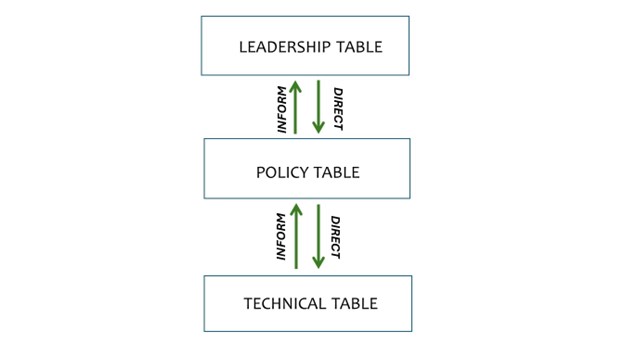The Nooksack and Sumas Watershed Transboundary Flood Initiative
The Transboundary Flood Initiative (TFI) uses a collaborative framework to identify actions to pursue to reduce flood-risk and restore habitats.
Floodwaters do not recognize borders. Repeated flooding from the Nooksack River in Whatcom County into the Sumas Prairie in British Columbia is a shared challenge on both sides of the US/Canada border. The flood events in 1990 and 2021 demonstrate that flood risk in the transboundary area of the Nooksack and Sumas watersheds is not an issue that any one government or First Nation can solve alone.
Each jurisdiction has unique priorities, perspectives, and authorities regarding flood mitigation in the transboundary area. We will be more effective by working together through the TFI.
On this page
Who’s involved
The nine partners to the collaborative framework are:
- Sumas First Nation (Semá:th)
- Leq’á:mel First Nation
- Matsqui First Nation (Máthxwi)
- Nooksack Indian Tribe
- Lummi Nation
- City of Abbotsford
- Whatcom County
- Province of British Columbia
- State of Washington
The initiative’s nine partners are committed to jointly:
- Advancing flood risk reduction and ecosystem restoration strategies
- Sharing data
- Leveraging funding opportunities to support flood mitigation projects in the transboundary area
The State of Washington and the Province of British Columbia help to facilitate and coordinate the work of the initiative. The TFI partners signed the Collaborative Transboundary Flood Management Framework (PDF, 223KB) (the framework) in October 2023. The framework will remain in effect for an initial period of four years. The partners anticipate renewals as solutions are advanced.
Initial work
Planned initial work of the TFI is:
- Updating and aligning hydraulic models and improving flood forecasting
- Understanding flood risk and impacted communities on both sides of the border
- Understanding uncertainty and factors affecting flood risk throughout the Nooksack and Sumas watersheds
- Developing joint values and objectives that communicate the varied interests and shared goals represented by the Initiative
- Looking for solutions that advance ecosystem restoration and mitigate flood risk
- Incorporating Traditional Ecological Knowledge into solutions where appropriate
- Creating durable solutions for adapting to climate change
Structure and decision-making
The framework includes three tables that work at different levels to develop solutions. Each table works together to address flooding concerns and ecosystem restoration.
The three tables are:
The three tables work collectively to advance:
- Policy recommendations
- Values-based discussions
- Technical solutions
Leadership Table
The Leadership Table includes elected leaders or representatives of government agencies from each of the nine parties. This table:
- Provides high-level coordination of priorities and needs
- Directs the Policy and Technical Tables to investigate topics
- Provides guidance to the Policy and Technical Tables when issues arise
- Meets two to three times per year
Policy Table
The Policy Table includes policy or department staff from each of the nine partners. This table:
- Discusses values-based issues and develops solutions to bring to the Leadership Table
- Requests more information from the Technical Table as needed
- Meets every other month
Technical Table
The Technical Table is made up of flood managers, scientists, and subject-matter experts. The table:
- Discusses technical information, such as sediment and river modeling and climate change data
- Works collaboratively with the Policy Table
- Receives direction from the Leadership Table to develop reports and plans
- Fosters collaboration between the Floodplain Integrated Planning work group in Whatcom County and the Sumas River Watershed Flood Mitigation Plan work group in B.C.
- Meets every other month
TFI documents
- October 20, 2023 news release jointly issued by the State of Washington and the Province of B.C.
- Collaborative Transboundary Flood Management Framework (PDF, 223KB)
TFI feedback
If you have feedback on the Transboundary Flood Initiative, please reach out to the First Nation or municipality where you live.
Other useful links
Related efforts
Contact information
nooksacksumasflood@kearnswest.com

